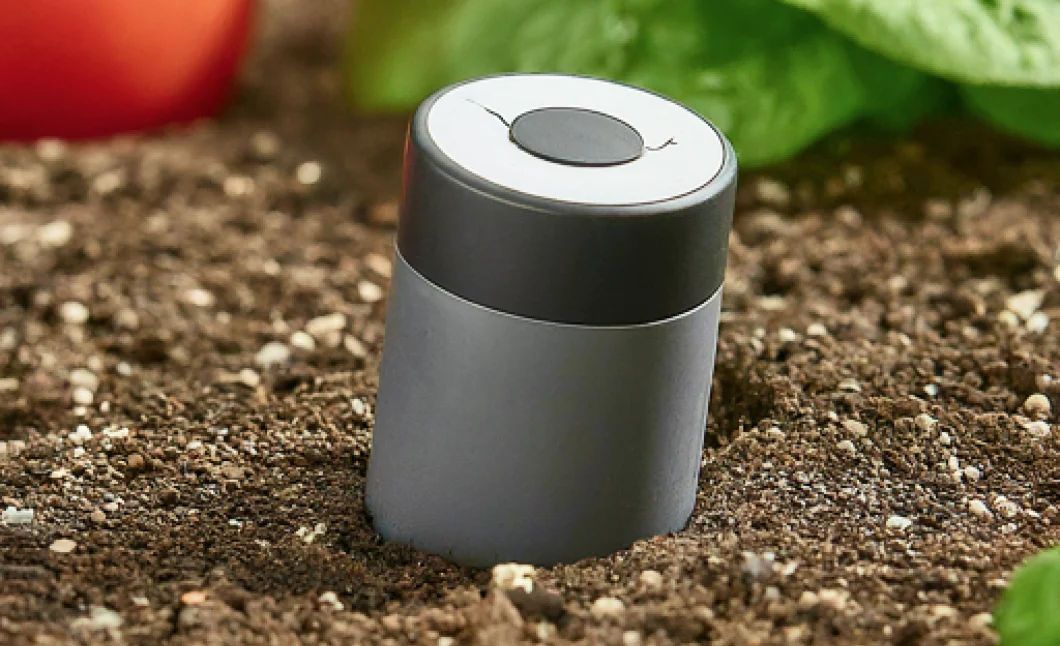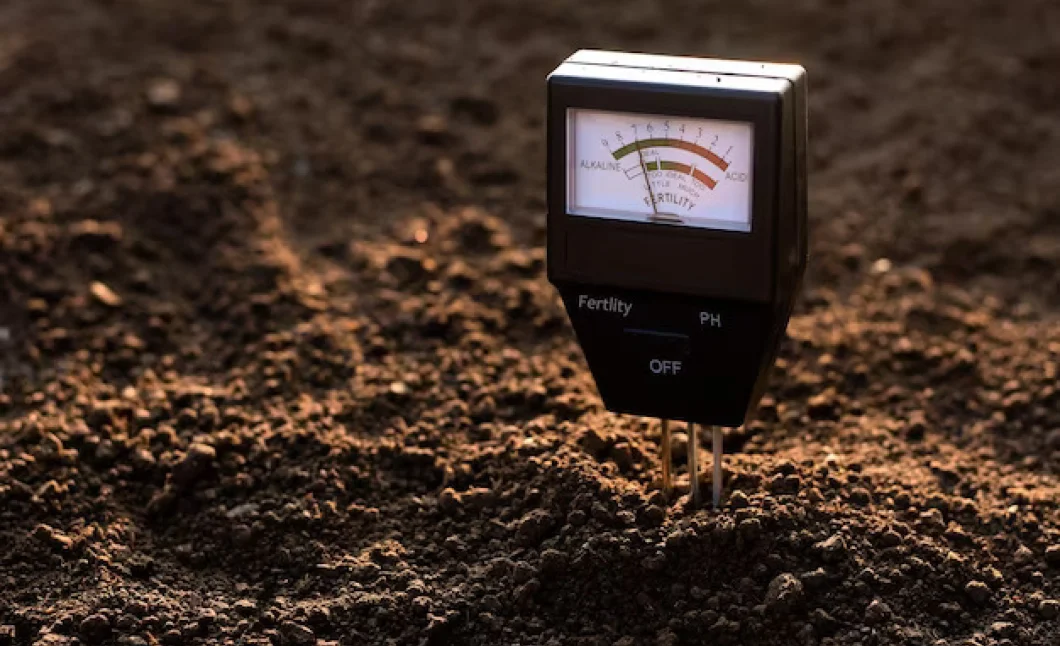The stark reality is that traditional farming practices waste precious resources, leading to both environmental and economic consequences. A staggering 30% of irrigation water evaporates or drains unused, while up to 50% of applied fertilizer pollutes waterways instead of nourishing crops. These inefficiencies not only impact farmers’ profitability but also pose a significant threat to our environment, contributing to water scarcity and pollution.
Empowering farmers to envision a smarter, more sustainable agricultural future.
A global study found that farms utilizing IoT sensors saw an average 15% increase in yield and a 20% reduction in water usage. This demonstrates the potential of smart farming technologies to make agriculture more sustainable and profitable.
Table of Contents
- Projected Global Market Value of Smart Farming 2021-2027
- The Role of Sensors in Smart Farming Technologies
- Precision Irrigation: Every Drop Counts
- Smart Fertilization: Feeding the Good, Not the Bad
- Beyond the Sensors: Data & Insights
- Different Types of IoT Sensors Used in Smart Agriculture:
- Get Your Free Assessment Today!
Projected Global Market Value of Smart Farming 2021-2027
This statistic presents the global market value of smart farming in 2021, along with a projected forecast for the years 2022 to 2027. The anticipated growth indicates that the global market size of smart agriculture is poised to increase from around 15 billion U.S. dollars in 2022 to 33 billion U.S. dollars by 2027.
The Role of Sensors in Smart Farming Technologies
Sensor-driven smart farming technologies are revolutionizing resource management, empowering farmers to maximize yield, minimize waste, and operate more sustainably.
Several types of sensors directly help farmers save water and fertilizer, each playing a specific role in gathering valuable data and enabling informed decision-making. Here are some key examples:
Precision Irrigation: Every Drop Counts

Imagine knowing exactly how much water your crops need, in real time. This is the magic of soil moisture sensors. These tiny marvels burrow into the earth, continuously monitoring moisture levels throughout the root zone. This data gets transmitted wirelessly to a central platform, providing farmers with a real-time snapshot of their fields’ hydration status.
Gone are the days of guesswork and scheduled irrigation based on past averages. With this granular data, farmers can implement precision irrigation, tailoring water delivery to the specific needs of each crop and field zone. This reduces water consumption by up to 30%, prevents overwatering and root damage, and ensures crops receive the optimal amount of moisture for optimal growth.
Smart Fertilization: Feeding the Good, Not the Bad

Similar to soil moisture sensors, nutrient sensors keep a watchful eye on the level of essential elements like nitrogen, phosphorus, and potassium within the soil. This real-time data allows farmers to apply fertilizer based on actual crop needs instead of blanket applications. Gone are the days of over-fertilizing, which not only wastes money but also contaminates water sources and contributes to harmful algal blooms.
By understanding precisely what nutrients their crops need, farmers can reduce fertilizer use by up to 40%. This translates to significant cost savings and a reduced environmental footprint. Moreover, targeted fertilizer application fosters healthier crops, boosting yields and overall farm productivity.
Beyond the Sensors: Data & Insights
While sensors collect valuable data, the real magic happens when it’s aggregated, analyzed, and transformed into actionable insights. Cloud-based platforms equipped with artificial intelligence (AI) and machine learning (ML) algorithms help farmers interpret sensor data, identify trends, and predict future needs.

These platforms can, for example, recommend optimal irrigation schedules based on weather forecasts and historical data. They can also suggest targeted fertilizer applications based on crop growth stages and soil nutrient levels. By leveraging data-driven insights, farmers can make informed decisions, optimize resource usage, and maximize their return on investment.
Beyond these, other sensors like drones and aerial imaging, livestock sensors, and water flow sensors can contribute to saving water and fertilizer by providing broader data points and optimizing various farm management aspects.
Different Types of IoT Sensors Used in Smart Agriculture:
The Internet of Things (IoT) sensors have revolutionized smart agriculture by enabling data-driven decision-making and resource optimization. Various types of sensors play crucial roles in collecting and transmitting crucial information about crops, soil conditions, and the environment. Here’s a breakdown of some key sensor types:
1. Environmental Sensors:
- Temperature and Humidity Sensors: Monitor ambient temperature and humidity levels, impacting crop growth, disease prevalence, and irrigation needs.
- Light Sensors: Measure light intensity and duration, crucial for understanding photosynthesis and optimizing greenhouse environments.
- Weather Stations: Combine multiple sensors to track wind speed, rainfall, and other weather conditions influencing crop health and irrigation decisions.
2. Soil Sensors:
- Soil Moisture Sensors: Measure soil moisture content, enabling precise irrigation based on actual needs, reducing water waste, and optimizing plant growth.
- Nutrient Sensors: Analyze soil composition for nitrogen, phosphorus, potassium, and other nutrients, guiding targeted fertilizer application and minimizing environmental impact.
- pH Sensors: Gauge soil acidity or alkalinity, crucial for selecting suitable crops and optimizing nutrient uptake.
3. Plant Sensors:
- Leaf Wetness Sensors: Monitor leaf moisture levels, informing irrigation decisions and preventing diseases that thrive in wet conditions.
- Plant Growth Sensors: Measure plant height, canopy cover, and biomass helping assess growth rate, predict yield potential, and identify areas needing attention.
- Fruit Size and Maturity Sensors: Track fruit development and maturity, optimizing harvest timing and maximizing crop quality.
4. Additional Sensors:
- Drones and Aerial Imaging: Capture high-resolution images and data for crop health monitoring, pest detection, and field mapping.
- Livestock Sensors: Monitor animal health, location, and behavior, improving animal welfare and optimizing management practices.
- Water Flow Sensors: Track water usage in irrigation systems, enabling leak detection and efficient water management.
The future of agriculture is undoubtedly smart. By embracing IoT technologies, farmers can reduce their environmental impact, improve resource efficiency, and boost their bottom line.
By adopting IoT sensors, you can access a world of benefits:
- Reduce water usage by up to 30% with precision irrigation.
- Cut fertilizer costs by up to 40% with the targeted applications.
- Boost crop yields by an average of 15% with data-driven insights.
- Minimize environmental impact and contribute to a sustainable future.
Get Your Free Assessment Today!
Imagine a future where your farm thrives, resources are conserved, and profits flourish. This isn’t science fiction; it’s the reality unlocked by HashStudioz Smart Agriculture Solutions. Our Smart Agriculture Solutions provide you with everything you need to get started
- Free Assessment: Claim your complimentary assessment for our Smart Agriculture Solution and be a part of smart farming!
- Personalized Solutions: Don’t wait! Take control of your farm’s resources and profitability with our intelligent farming technology. Get started today!
- Follow us on LinkedIn: Stay informed about the newest trends and expert perspectives in Smart Agriculture. Follow HashStudioz Technologies on LinkedIn!

